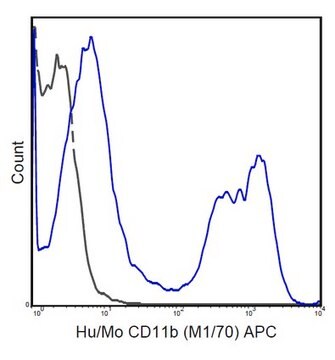WH0004149M1
Monoclonal Anti-MAX antibody produced in mouse
clone 4E10-1A9, purified immunoglobulin, buffered aqueous solution
Sinônimo(s):
Anti-MGC10775, Anti-MGC11225, Anti-MGC18164, Anti-MGC34679, Anti-MGC36767, Anti-MYC associated factor X, Anti-orf1
About This Item
Produtos recomendados
fonte biológica
mouse
Nível de qualidade
conjugado
unconjugated
forma do anticorpo
purified immunoglobulin
tipo de produto de anticorpo
primary antibodies
clone
4E10-1A9, monoclonal
Formulário
buffered aqueous solution
reatividade de espécies
human
técnica(s)
immunofluorescence: suitable
indirect ELISA: suitable
proximity ligation assay: suitable
western blot: 1-5 μg/mL
Isotipo
IgG2aκ
nº de adesão GenBank
nº de adesão UniProt
Condições de expedição
dry ice
temperatura de armazenamento
−20°C
modificação pós-traducional do alvo
unmodified
Informações sobre genes
human ... MAX(4149)
Categorias relacionadas
Descrição geral
Imunogênio
Sequence
MSDNDDIEVESDADKRAHHNALERKRRDHIKDSFHSLRDSVPSLQGEKASRAQILDKATEYIQYMRRKNHTHQQDIDDLKRQNALLEQQVRALEKARSSAQLQTNYPSSDNSLYTNAKGSTISAFDGGSDSSSESEPEEPQSRKKLRMEAS
Ações bioquímicas/fisiológicas
forma física
Informações legais
Exoneração de responsabilidade
Não está encontrando o produto certo?
Experimente o nosso Ferramenta de seleção de produtos.
Código de classe de armazenamento
10 - Combustible liquids
Ponto de fulgor (°F)
Not applicable
Ponto de fulgor (°C)
Not applicable
Equipamento de proteção individual
Eyeshields, Gloves, multi-purpose combination respirator cartridge (US)
Escolha uma das versões mais recentes:
Certificados de análise (COA)
Não está vendo a versão correta?
Se precisar de uma versão específica, você pode procurar um certificado específico pelo número do lote ou da remessa.
Já possui este produto?
Encontre a documentação dos produtos que você adquiriu recentemente na biblioteca de documentos.
Global Trade Item Number
| SKU | GTIN |
|---|---|
| WH0004149M1-100UG | 4061831634297 |
Nossa equipe de cientistas tem experiência em todas as áreas de pesquisa, incluindo Life Sciences, ciência de materiais, síntese química, cromatografia, química analítica e muitas outras.
Entre em contato com a assistência técnica








